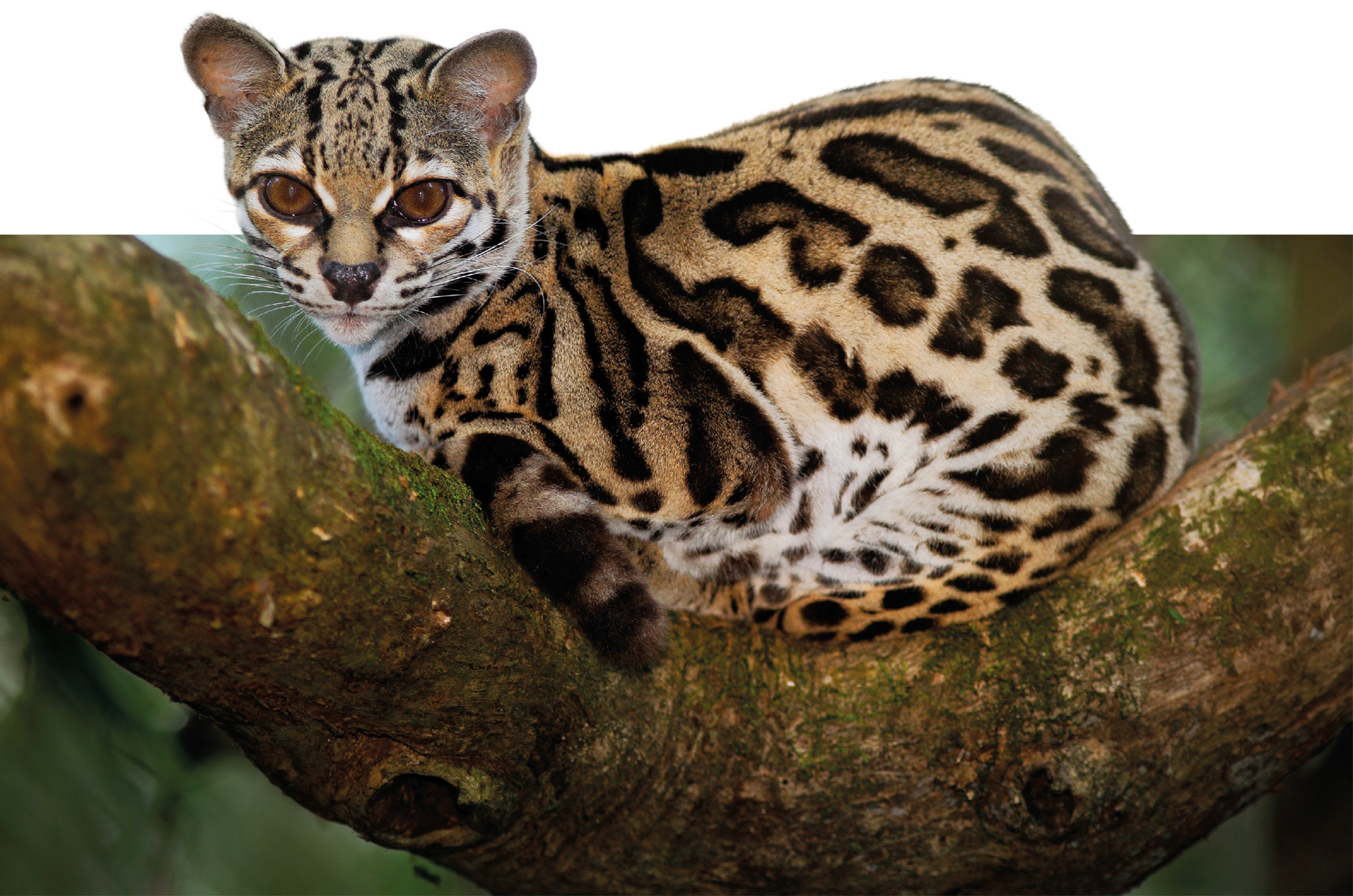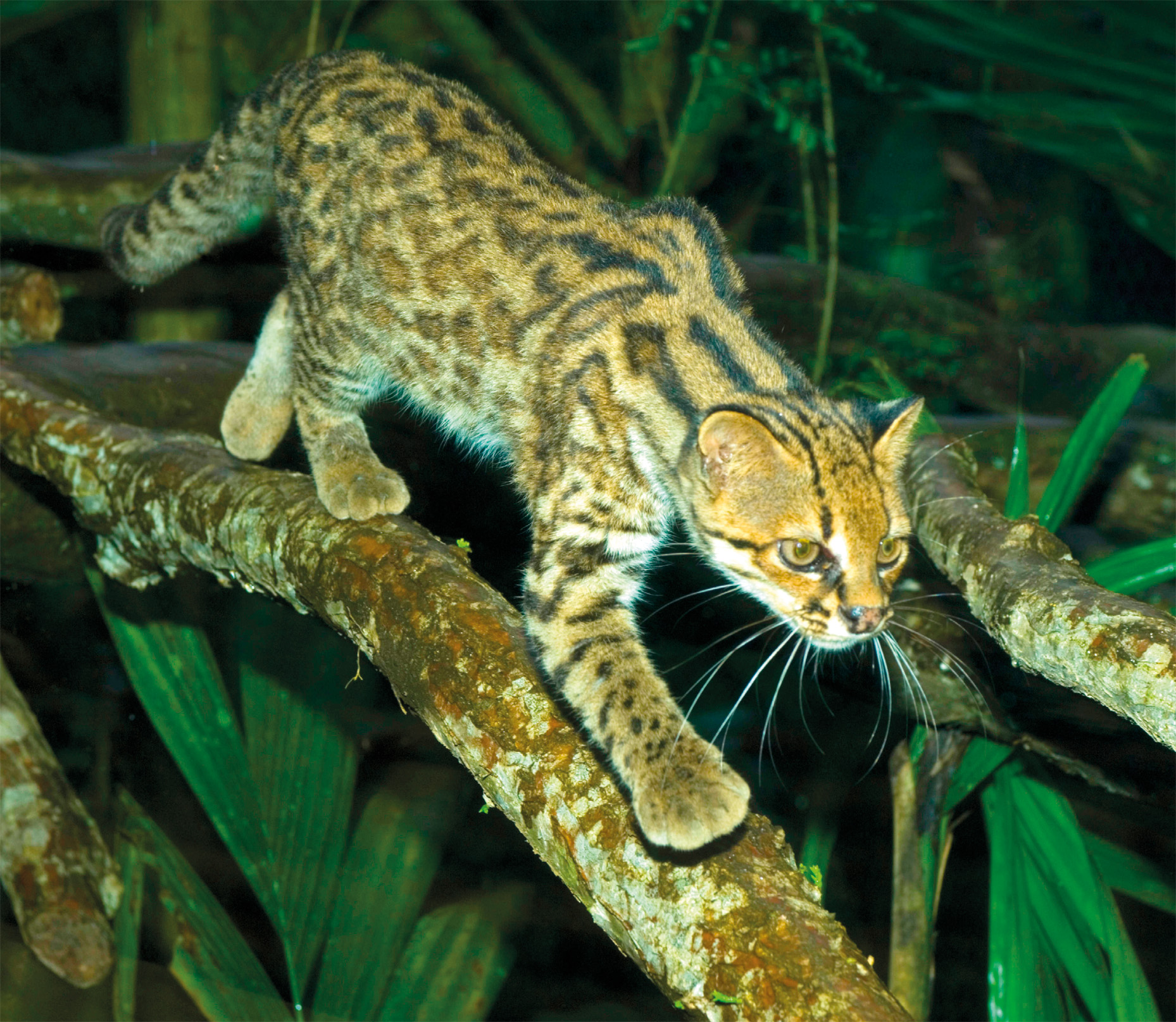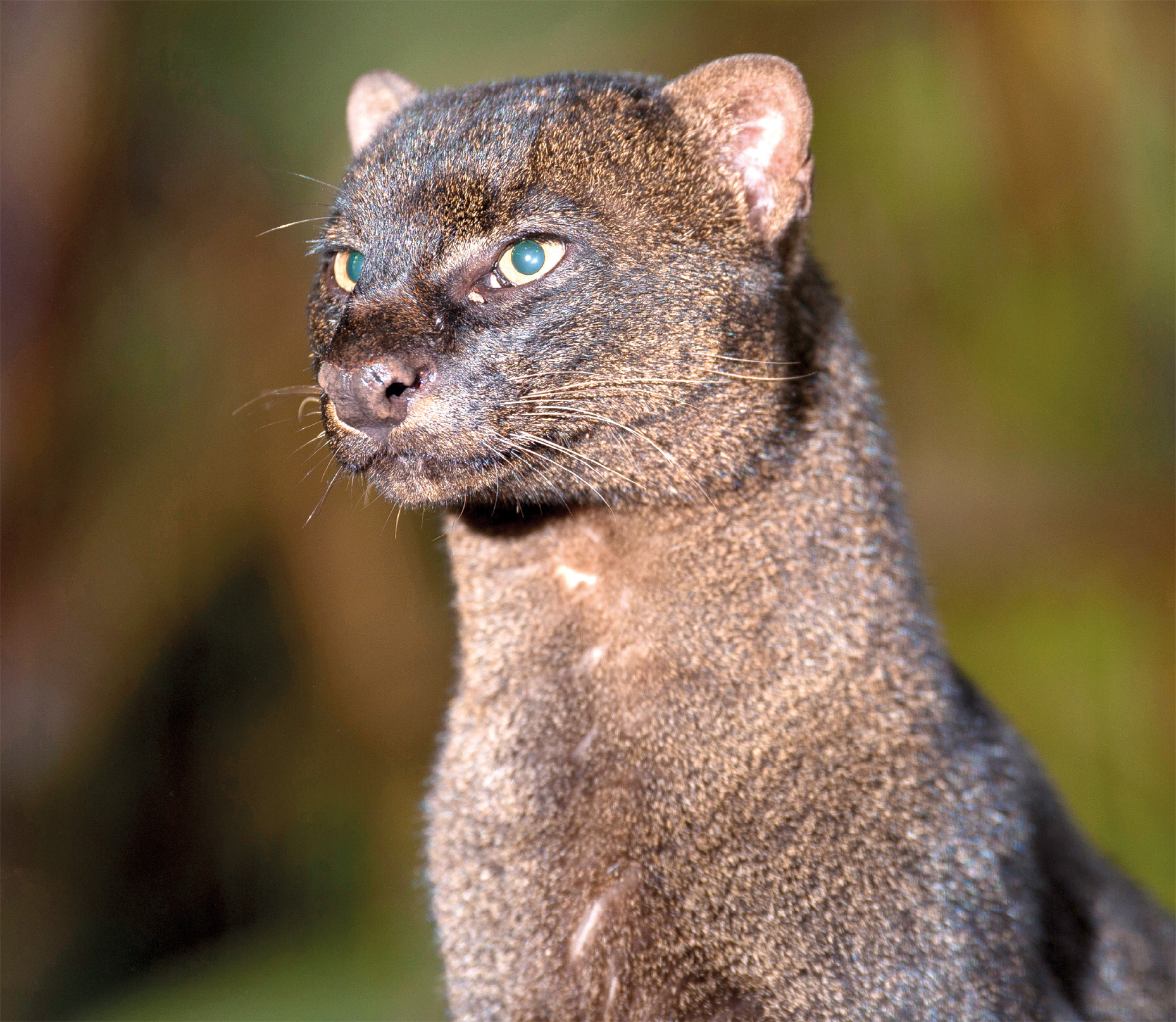FIELD GUIDE Animal Directory
cats
Elusive, solitary, and mainly nocturnal, cats belong to the Felidae family. Among the most difficult mammals to spot in the wild, these agile killers feed on living creatures, from fish, rodents, and small birds to deer and tapirs. Each species varies in size and coloration, yet all cats are shaped like their domestic cousins, with round heads, keen eyes, and prominent canines; large paws with long, retractable claws; and sinuous bodies, plus long tails that aid balance. Most are well adapted to hunt both on the ground and in trees.
TAXONOMY
Costa Rica is home to six felid (wild cat) species. These are ocelot, margay, oncilla, cougar (variously known as mountain lion, puma, catamount, and panther), jaguarundi, and jaguar. They are divided into three genera. Leopardus, small to medium-sized spotted cats, are often similar to typical domestic cats in their size and stature. Two species of Puma, representing larger cats, which have uniform coloration; both live in Costa Rica. Panthera, so-called “big cats”, such as lions, tigers, and leopards, have larynx modification permits them to roar, growl, and shriek. The jaguar is Costa Rica’s only Panthera.
Ocelot (LC)
Species Leopardus pardalis Seen Cahuita National Park, Santa Rosa National Park

The largest of Costa Rica’s small felids, this graceful yet secretive cat is widely distributed throughout lowland and mid-elevation habitats, from the dry savannas of Guanacaste to the rain forests of Corcovado. Called manigordo by the locals, the ocelot has a stocky body; it can grow to 39 in (100 cm) in length and weigh up to 22 lb (10 kg). Its short, sleek, and golden or cream-colored fur is spotted with orange rosettes ringed by black and arranged in irregular chains along its back. Like its cousins, the margay and the oncilla, the ocelot has a black stripe on each cheek and twin black stripes running up its forehead, plus a black-banded tail. Adults are solitary and will often defend their territories – which they mark with pungent urine and feces – to the death. Like all cats, the ocelot has superb night vision, which it puts to good use when prowling dense forests in search of prey. A more diverse feeder than most cats, the ocelot will even feed on amphibians, fish, and small reptiles, although its main diet consists of small mammals, such as rabbits and rodents. Females typically give birth to a single cub – but, occasionally, two or even three kittens – every two years. Once hunted extensively for its fur and for the illegal pet trade, the ocelot is now considered of least concern on the IUCN list of endangered species and can be found in a wide area ranging from northern Mexico to the Tropic of Capricorn.
Margay (NT)
Species Leopardus wiedii Seen Corcovado, Tapantí-Macizo la Muerte
Less frequently seen than its larger cousin the ocelot, the margay prefers dense forest, in which it is supremely adapted for life in the trees. This medium-sized cat also has a longer tail and legs, and a smaller head with larger eyes. An agile climber, it spends much of its time hunting birds and other treetop creatures, and it has evolved a special ankle structure that permits it to turn its feet 180 degrees. Capable of prodigious leaps, the margay can run headfirst down tree trunks and even hang from branches.

Oncilla (VU)
Species Leopardus tigrinus Seen Braulio Carrillo, Monteverde
Almost entirely nocturnal, this ground-loving forest dweller prefers higher elevations than its cousins the ocelot and the margay. While it bears a close resemblence to the margay, the oncilla – or tigrillo, as the locals call it – is much smaller, growing to only 23 in (59 cm) in length. It also has a short, narrow jaw, and unmistakable huge, round eyes. Heavily hunted for its fur, the oncilla is currenty listed as vulnerable by the IUCN.

Cougar (LC)
Species Puma concolor Seen Chirripó, Santa Rosa
Known locally as león, the cougar is the most adaptable of the American felids – in Costa Rica it is found in every habitat. This master of the ambush stalks large prey such as deer but also eats rodents, reptiles, and even insects. The cougar has the longest hind legs relative to body size of any American felid, good for big leaps and short sprints of up to 35 mph (56 km/h). The cougar’s unicolored coat can range from silvery to chestnut, depending on its habitat.

Jaguarundi (LC)
Species Puma yagouaroundi Seen Barra Honda, Rincón de la Vieja
This smaller relative of the puma is found in grassland, lowland scrub, and mid-elevation forest. Its coat ranges from chestnut to dark chocolate, and its long body and short legs have earned it the nickname “otter cat.” Its ears are short and rounded, and its small face features piercing blue-green eyes. As well as chirping and whistling, it purrs and hisses like a domestic cat. The jaguarundi is mainly diurnal, which makes it the most readily seen of Costa Rica’s felids.

